




Wastewater is the receptacle of chemical molecules and microorganisms that reflect our consumption habits, drug use, exposure to pollutants, and infections. Wastewater-based epidemiology, thanks in particular to the OBEPINE project in France, experienced a remarkable boom during the COVID-19 crisis. Selected and financed as part of the France 2030 plan, the OBEPINE+ project aims to build a French national platform for research and development in wastewater-based epidemiology, as part of the national system for preventing future emerging infectious diseases and high-risk pathogens. A great deal of work is currently being carried out in this area, focusing on the monitoring of human respiratory viruses (influenza A/B, respiratory syncytial virus, SARS-CoV-2), emerging infections (poliovirus, measles, mPox), zoonotic infections (avian influenza, hantavirus, leptospirosis) and, more recently, sexually transmitted infections and, in particular, human papillomavirus infections.


Vincent Maréchal is Professor of Virology at Sorbonne University.
After completing a doctorate between Paris Diderot University and Princeton University, where he was an assistant professor, he became fascinated by the molecular basis of carcinogenesis (P53, mdm-2) and reconciled his interests in fundamental virology and cancerology by developing research projects on oncogenic viruses, in particular the Epstein-Barr virus. His work has led him to analyze the impact of inflammation on the tumor process (role of HMGB1 alarmin) and to invest in the discovery of antiviral molecules targeting oncogenic herpesviruses and – more recently – SARS-CoV2.
Vincent Maréchal is co-founder of several COVID-19 research initiatives, including the OBEPINE Scientific Interest Group. He is currently the director of the OBEPINE+ program, a research and development platform dedicated to wastewater-based epidemiology.


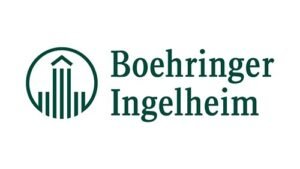





Accademic background: Nicolas obtained his PhD in immunology in Schering Plough’s labs (Dardilly, France) in 1996 and then pursue his fundamental research work as a post doctoral fellow in Dr Kronenberg’s Laboratory (UCLA & UCSD)
Pharma Industry background: Nicolas joined Sanofi Pasteur R&D in 2000 as an immunologist, became head of the Immunolgy platform in Research in 2003, then Head of Discovery EU R&D in 2007, then Global Head of Research and Non Clinical safety (R&NCS) R&D in 2014, then Global Head of R&D Efficiency and Portfolio Management, Global Head of Office of R&D & Chief of Staff in 2016 and finally global Head of End to End Immunology Vaccine in 2021. In those postions, Nicolas and his teams have contributed at different levels of the value chain to the early development and translation of new vaccines against infectious diseases and to several strategic reshapings of new vaccine portfolio.
Current position at Clover: Nicolas joined Clover Biopharmaceuticals mid-august 2022 as Global Head of Research and has been apointed global head of R&D in May 2024. Nicolas drives the overall efforts of Clover to become an impactful player in the vaccine field in Asia and globally.
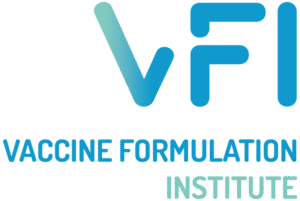

Dr. Céline Lemoine is currently the Head of Laboratories at the Vaccine Formulation Institute (VFI), where she leads the R&D team. She holds an MSc in Biopharmaceutical Sciences from the University of Leiden and a PhD in delayed-delivery vaccine formulations from the University of Geneva.
Her work focuses on supporting vaccine development through formulation with VFI’s clinical adjuvant portfolio, while also advancing innovative research to strengthen the adjuvant pipeline and address unmet needs in the field. Dr. Lemoine is dedicated to support collaborators around the world in accessing and evaluating appropriate adjuvant technologies, with a particular interest in malaria, tuberculosis and group A strep vaccine development.

The dynamic and rapid evolving landscape of viral pathogens, driven by high mutation rates, adaptive evolution and other factors, highlights the indispensable role of vaccine in preventing the spread of virus infections. As new viral pathogens continuously emerge and existing viruses reemerge, the need for innovative, adaptable, and robust vaccine development platforms has become progressively essential.
To facilitate the discovery of viral vaccines, we have developed a comprehensive platform which can support discovery of various vaccine modalities, such as traditional and mRNA vaccines. This vaccine platform encompasses in vitro and in vivo assay systems for a wide range of viruses, including HBV, RSV, influenza and herpes viruses, among others. Our capabilities include vaccine design, vector adaptation, in vitro assessment, evaluations of immunogenicity, efficacy, and vaccine-induced ADE across animal models. Our novel adjuvants and antigen delivery vectors can be employed to enhance immunogenicity and safety profiles of candidate vaccines. Furthermore, we provide comprehensive supports for IND-enabling studies and bioanalysis for vaccine clinical trials.
A compelling example of the vaccine development platform is the RSV assay system. Candidate vaccine expression is evaluated in cell-based assays using FACS and Western blot. Pre- and post-F specific antibodies are examined in animal models through ELISA. Immunogenicity is assessed in animals by measuring the humoral (IgG, IgA, PCA, DCA) and cellular immune responses (ELISpot, ICS). Importantly, vaccine efficacy is evaluated through protection studies in vaccinated animals by challenging with various viral strains, with outcomes determined by monitoring clinical symptoms and quantifying viral load in lungs.


He holds a Master’s degree from the Wuhan Institute of Virology, Chinese Academy of Sciences, with over 15 years’ experience in antiviral drug activity evaluation. He joined WuXi AppTec in 2010, and now he is in charge of preclinical infectious disease platform in WuXi Biology infectious disease team of over 140 scientists. The team is dedicated to establishing high-standard antiviral and antibacterial efficacy evaluation platforms to advance anti-infective drug development. He possesses extensive expertise in platform development and drug efficacy assessment for viruses, bacteria, and other pathogens.
The potential of RNA-based vaccines to prevent and treat infectious diseases has been demonstrated to a remarkable extent. However, the clinical impact of these agents is often constrained by delivery technologies that compromise cell integrity, limit bioavailability, or trigger unwanted immune responses. The FlashRNA® platform, offered by RNAlead, represents a novel generation of hybrid nanoparticles that have been engineered to address these limitations. In contrast to conventional lipid nanoparticles (LNPs), FlashRNA® has been demonstrated to achieve efficient and safe delivery of multiple RNA molecules while maintaining high RNA stability and low immunogenicity. Its unique composition enables efficient cellular uptake and cytoplasmic release, thereby enhancing protein expression. Preclinical data demonstrate the versatility and safety of this approach across several models relevant to vaccine development. By addressing key challenges in RNA encapsulation, biodistribution, and immune modulation, FlashRNA® provides a robust and innovative alternative to LNP-based systems, paving the way for next-generation RNA vaccines and immunotherapies.


PhD scientist with extensive research experience in France (INSERM, CNRS) and the U.S. (St Jude Children’s Research Hospital), Christine has spent 17 years in the biotech industry. She has a strong interest in immunotherapy breakthroughs and spent 16 years at Flash Therapeutics managing gene transfer projects, from cell to in vivo models and finally clinic, as CSO. As the CEO/CSO at RNAlead, she is dedicated to advancing transformative cell and gene therapies thanks to the FlashRNA® technology.
The large-scale production of viral vectors, whether for vaccines or gene therapies, faces significant challenges in terms of quality control. Conventional characterization methods are often time-consuming, costly, and require the combination of multiple techniques to access critical information such as viral particle concentration, genome encapsidation rate, and presence of defective or empty capsids. These constraints limit rapid decision-making during production and increase the risk of discarding usable batches due to incomplete or insufficiently sensitive analyses.
To address these limitations, we are developing ViroID, a nanopore-based technology designed to enable rapid, universal, and quantitative characterization of viral particles directly at the point of production. The project originates from academic research conducted at the Physics Laboratory of ENS Lyon (CNRS). It is currently supported by a maturation program with PULSALYS and is progressing towards the creation of a start-up. Beyond bioproduction, we are also exploring applications in environmental monitoring, in particular the surveillance of wastewater to follow viral circulation at the population level.
ViroID integrates a nanopore system coupled to a highly sensitive optical detection module that enables the real-time detection of individual fluorescently labeled viral particles translocating through nanopores under flow [1]. The device provides access to key parameters in a single assay, including viral particle concentration, loading efficiency, and the presence of unwanted particles. The method is compatible with low sample volumes (<20 µL) and short processing times (<1 h), making it particularly suitable for in-process monitoring.
Because it relies solely on fluorescent labeling, ViroID enables adjustable specificity levels depending on the needs of the application, while providing a rapid and robust quantitative method. For example, by selecting appropriate fluorescent labels, we can target entire viruses through their capsid proteins, viral envelopes, and/or genomes. Unlike molecular techniques such as PCR or ELISA, which assess viral components individually, our method provides information on intact particles, offering a more integrated overview of sample quality. This flexibility makes ViroID compatible with a wide range of viruses used in vaccines such as virus-like particles and viral vectors, including small ones as Adeno-Associated Viruses. Moreover, it offers a significant advantage for concentration quantification in low-concentration samples, as its detection limit is less than 103 particles/mL, which is 1000 times lower than current whole-virus detection techniques like Nanoparticle Tracking Analysis or interferometric microscopy.
In collaboration with several co-development partners, including the pharmaceutical platform FRIPharm (Lyon) and the Viral Vector Manufacturing Center (Nantes), we have developed a first compact prototype, which has already been tested on bioproduction samples. Efforts are also underway to design an eco-responsible consumable system based on reusable glass microfluidic chips and minimal use of reagents, without the need for cold-chain logistics.
While the technology holds promise for various applications, its primary target is the bioproduction of viral vectors, where it can significantly reduce batch rejection rates, improve process control, and shorten validation timelines.
We are actively seeking industrial and academic partners to co-develop and validate VIRO-ID in real-world production environments and ensure its alignment with sector-specific needs.


After a PhD in Physics on virus transport through nanopores, I now work as a research engineer at the Physics Laboratory of ENS Lyon. I am developing, ViroID, a technology born from my thesis and supported by PULSALYS through a maturation. ViroID is a nanopore-based device enabling rapid and universal characterization of viral particles. It provides real-time, at-line access to critical information such as viral vector concentration, particle loading rate, and the presence of unwanted particles—enabling better control, reduced losses, and faster process optimization. The project is now moving toward startup creation to bring this technology to the field.
Background: The increasing threat of emerging infectious diseases demands rapid-response vaccine platforms that can be quickly adapted to new pathogens. Current vaccine development timelines of years are inadequate for pandemic preparedness, while traditional approaches often fail to generate robust immune responses against highly pathogenic viruses.
Offer/project description: We developed nanoSFERIC, a breakthrough modular vaccine technology featuring protein scaffolds that self-assemble into oligomeric nanoparticle rings with planar antigen display. The platform enables rapid antigen modification and swapping within weeks and involves efficient and scalable manufacturing with well-defined product. The rigid ring structure enhances immunogenicity through optimized BCR clustering and CD45 exclusion, delivering superior antibody responses after single-dose administration.
Innovative strength & Applications: nanoSFERIC’s key innovation lies in its planar and high-density antigen presentation, combined with rapid plug-and-play antigen swapping capabilities. Nanoparticle population is homogeneous and stable at 4oC. Preclinical studies demonstrated superior immunogenicity compared to soluble proteins and virus-like particles, with sustained antibody responses and compatibility with both intramuscular and mucosal delivery routes. The technology is applicable both for the development of pandemic vaccines and for the development of personalized cancer vaccines, offering significant cost-effectiveness and global deployment advantages.
Conclusion: nanoSFERIC represents a paradigm shift in vaccine development, providing the flexibility and rapid response capabilities essential for addressing current and future infectious disease challenges.
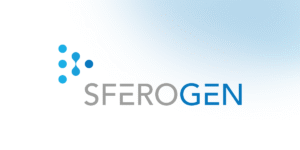

Urban Bezeljak received his PhD in biochemistry from the Institute of Science and Technology Austria (ISTA), after which he joined COBIK in Ajdovščina, Slovenia, where he led the development of a multivalent COVID-19 vaccine. This work led to the founding of Sferogen as a spin-off company, which successfully raised 3 million EUR in seed investment. Currently, Urban serves as CEO and CSO at Sferogen, where the company has developed the nanoSFERIC™ vaccine platform. He actively contributes to vaccine development and oversees ongoing preclinical studies in infectious disease and cancer immunotherapy.
Innovative delivery technologies are redefining the field of immunotherapy, providing versatile platforms to address urgent needs in infectious diseases, epidemic preparedness, oncology, and chronic infections. While passive immunotherapy with purified monoclonal antibodies has demonstrated clinical value, new RNA- and viral vector–based strategies offer opportunities for more sustained in situ expression and improved therapeutic flexibility.
In this study, we performed a head-to-head comparison of three delivery formats for the same neutralizing antibody against SARS-CoV-2: (i) purified antibody, (ii) lipid nanoparticle–formulated mRNA (LNP-RNA), and (iii) recombinant adeno-associated virus (rAAV). Neutralizing antibody constructs were evaluated in C57BL/6 mice to investigate expression kinetics, persistence, functional activity, and immunological responses.
Purified antibody injections led to rapid serum detection but with a short half-life, consistent with expected pharmacokinetics. Although persistence could be extended through Fc engineering, this format remains intrinsically transient. LNP-RNA delivery at the tested dose (5 µg/mouse) did not result in detectable antibody expression, underscoring the limitations of current formulations optimized for vaccination rather than sustained therapeutic protein expression. In contrast, rAAV-mediated delivery supported robust and long-lasting antibody expression, making it the most effective of the three strategies for sustained in vivo production. Ongoing work is focused on evaluating alternative RNA formats (linear mRNA, self-amplifying RNA, and circular RNA) to assess whether they can achieve intermediate persistence between short-lived purified antibodies and long-term rAAV expression.
Beyond persistence, rAAV-derived antibodies showed enhanced Fc effector functions, including stronger ADCC and ADCP activities. This improvement likely stems from host cell–driven glycosylation of antibodies produced in situ, highlighting an additional functional advantage of vectorized delivery.
Finally, the immunological profile of each format revealed notable differences. Purified antibody injections and rAAV delivery were largely immunologically neutral, with minimal induction of inflammatory responses. By contrast, LNP-RNA administration triggered transient cytokine release and innate immune activation, both systemically and in the lungs. While such an effect is desirable in a vaccination context, it may represent a drawback for passive immunotherapy, particularly in patients where hyperinflammation could be detrimental.
Together, these findings underscore the complementary advantages of each strategy: purified antibodies for immediate neutralization in emergency or intensive care settings and rAAV for durable antibody expression in chronic or prophylactic contexts. A combinatorial therapeutic approach leveraging these complementary modalities may therefore represent a powerful and flexible toolbox for future passive immunotherapy against infectious and non-infectious diseases.
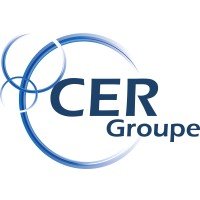

I am a Preclinical Analytical Manager at CER Groupe, where I lead the development and validation of in vitro platforms supporting biotech and pharma partners. With over 20 years of expertise in immunology, infectious diseases, and cell biology, I have built a strong track record in translational research, from neonatal immunity and microbiota to vaccine development and immunotoxicology. I previously held research positions at the Institute for Medical Immunology, Institut Pasteur Lille, and CNRS. I combine scientific leadership with project management skills, optimizing analytical strategies to bridge academic research and industrial applications, with a focus on innovative therapeutic and vaccine development.
Buisson Marlyse 1, 2, Solis Morgane 3, Pedenko Borys 1, Dergan-Dylon Leonardo 1, Grossi Laurence 1, Bally Isabelle 1, Amen Axelle 1,4, Pletan Catherine 5, Schoehn Guy 1, Fafi-Kramer Samira 3, Poignard Pascal 1, 2
Kidney transplantation is the most common solid organ transplant and the gold standard treatment for end-stage renal disease (ESRD). However, reactivation of BK polyomavirus (BKPyV), a ubiquitous childhood infection, is a major complication in immunosuppressed recipients. BK virus–associated nephropathy (BKVAN) occurs in 1–10% of kidney transplant patients and is a leading cause of graft dysfunction and loss. No approved antiviral therapies exist, and current management relies on reducing immunosuppression, a nonspecific and often suboptimal strategy. Monoclonal neutralizing antibodies (mAbs) therefore represent a promising targeted therapeutic option.
Here, we report the isolation of 53 unique human mAbs from a kidney transplant recipient with strong serum neutralizing activity against the three most prevalent BKPyV genotypes. Antibodies were generated by single memory B-cell sorting using pentamers of the VP1 capsid protein, the target of neutralizing antibodies. These mAbs, derived from 30 unrelated B-cell lineages, were characterized for binding and neutralization and showed diverse activity profiles. Notably, six mAbs from one lineage demonstrated broad and ultrapotent neutralization of genotypes I, II, III, and IV in the sub-nanomolar range. Importantly, their neutralization potency was not significantly affected by BC loop mutations commonly found in clinical isolates, including D60N, E73K, A72V/E73Q and E82D.
Structural studies of Fab–VP1 complexes from five different antibodies by cryo-electron microscopy revealed that the neutralizing mAbs recognize quaternary epitopes spanning three VP1 monomers. The binding sites mapped to the variable BC loop and the conserved HI loop, regions critical for receptor interaction. Functional assays confirmed that the most potent mAbs efficiently blocked VP1 binding to receptor-expressing HEK293T cells. Structural comparison of two highly potent somatic variant mAbs showed nearly identical footprints on VP1 but revealed subtle differences in molecular contacts. These findings, supported by mutagenesis and affinity assays, indicate that the two antibodies are not interchangeable.
Five highly potent, broadly neutralizing mAbs were prioritized for preclinical evaluation, and one lead candidate was selected for further development. This antibody, designated SPK004, is being developed by the company SpikImm as a long-acting IgG molecule with an extended half-life, to serve as a prophylactic intervention against BKVAN in kidney transplant recipients.

Background: Identifying pathogen-derived peptides presented by human leukocyte antigens (HLA) is essential for developing targeted immunotherapies. HLA-peptide specificity determines which peptides can trigger T-cell responses and explains inter-individual differences in immune reactivity. However, the extensive polymorphism of HLA molecules and the vast number of potential pathogen-derived peptides make systematic identification challenging. Although computational tools exist to predict HLA class II–peptide binding, their accuracy remains limited. Therefore, novel high-throughput laboratory tools for epitope identification are essential.
Project Description: We applied high-density peptide microarrays to systematically map peptide interactions with HLA class II, focusing on human cytomegalovirus (HCMV) epitopes restricted by HLA-DRB1*1101. The microarrays contained 4,327 overlapping 15-mer peptides covering 24 HCMV proteins. Peptide-HLA binding was detected using biotinylated HLA monomers and fluorescent streptavidin. Selected peptides were further analyzed with FluoroSpot assay to assess their capacity to stimulate T-responses. This approach enables high-throughput identification of HLA class II binders as T-cell epitope candidates.
Innovative Strength & Applications: High-density peptide microarrays provide a scalable, high-throughput platform for mapping peptide–HLA interactions and identifying T-cell epitopes with functional relevance. Applications include selection of peptides effectively presented by HLA class II subtypes, discovery of T-cell epitope candidates for immunotherapy and vaccine design, and assessment of potential T-cell–dependent anti-drug antibody (ADA) responses.
Conclusion: Our study demonstrates that high-density peptide microarrays can systematically identify HLA class II binders and functional T-cell epitopes, complementing computational predictions and accelerating epitope discovery for immunotherapies, vaccine development, and T-cell-dependent anti-drug antibody (ADA) assessment. This approach provides an efficient, scalable tool for immune system analysis and supports the development of targeted interventions against infectious diseases.


Dagmar Hildebrand is Head of R&D at PEPperPRINT GmbH, a biotechnology company based in Heidelberg, Germany, offering peptide microarray solutions and immunoassays for analyzing the immune system. She leads projects on biomarker identification, B- and T-cell epitope discovery, and diagnostic test development in collaboration with academic and industrial partners. She has over 10 years of academic research experience in infection and immunology and previously held a PI position at the Centre for Infectious Diseases, University Hospital Heidelberg, Germany.
Charlotte Primard1, Mathilde Jarlier1, Judith Del Campo1, Séverine Valsesia1, Florian Gobet2, Thomas Courant2, Delphine Guyon-Gellin1, Alexandre Le Vert1, Florence Nicolas1
1Osivax, Lyon, France
2VFI, Lausanne, Suisse
Influenza-A viruses’ evolution and diffusion pose a significant threat to animal and human health. Zoonotic transmission, particularly from avian strains as H5N1, H7N9, or H9N2, remains a major pandemic risk. While neutralizing antibodies targeting the hemagglutinin (HA) surface protein offer effective protection, HA-based vaccines provide limited coverage against antigenically divergent strains. Osivax is developing OVX836, a recombinant vaccine targeting the highly conserved nucleoprotein (NP). In humans, OVX836 elicited strong NP-specific T-cells and antibody responses, with a preliminary efficacy signal of protection of 84%.
Here we evaluated the protection provided by OVX836 alone and with SQ adjuvant (a squalene emulsion with QS21 saponin) against H5N1 and H7N9 in pre-infected mice and ferrets. These models reflect human pre-existing NP immunity from repeated seasonal influenza infections.
Mice pre-infected with Mouse-Adapted H3N2-A/Hong-Kong/1/1968, were immunized twice, 21 days apart with either OVX836 (30µg), OVX836+SQ (15µg) or a negative control. Twenty-one days after, mice were challenged with 100.6 TCID50 of H5N1-A/Hong-Kong/156/1997 via intranasal instillation. Clinical signs, body weight and survival were monitored daily for 14 days.
Ferrets who were naturally exposed to Influenza and had confirmed haemagglutination inhibiting antibody response against pH1N1 were immunized twice, 21 days apart with either OVX836 (300µg), OVX836+SQ (150µg) or a negative control. NP-specific immune responses were assessed before and after immunizations, by ELISA for anti-NP IgG, and using IFNγ ELISpot for T-cell responses. Twenty-one days after the last immunization, ferrets were challenged with 105 TCID50 of H7N9-A/Anhui/1/2013 via intratracheal instillation, and viral loads were followed on daily-collected nasal swabs. Seven days post-challenge, ferrets were euthanized, then lung examined through gross-pathology/ histopathology.
Pre-exposure to H3N2-MA virus did not protect mice against H5N1 infection. Only 17% of mock-immunized mice survived after losing more than 20% of their initial weight. In contrast, 50% of mice given OVX836 recovered and survived, while 83% of OVX836+SQ vaccinated mice survived the challenge.
In ferrets, intratracheally delivered virus reached the upper respiratory tract, as shown by rising viral loads in daily-collected nasal swabs from mock-immunized animals. In contrast, no viral RNA was detected by RT-PCR during the first 2 days post-challenge in OVX836-immunized ferrets, and throughout 7 days in OVX836+SQ-immunized animals. At scheduled necropsy, lungs gross-pathology scores showed around 50% affected tissue in controls, 25% in the OVX836 group, and only 12.5% in all ferrets immunized with OVX836+SQ, a significantly lower level.
Finally, OVX836 vaccination boosted NP-specific IgG and T-cell responses. NP-specific IgG titers reached 3.56 Log10 (OVX836) and 3.96 Log10 (OVX836+SQ), with a significant difference. Pre-immunization T-cell responses increased from 72 NP-specific IFNγ SFU/10⁶ PBMC to 1372 (OVX836) and 1525 (OVX836+SQ) on average post-vaccination.
To conclude, OVX836, a NP-based vaccine, showed strong efficacy against H5N1 and H7N9 infections, in animals pre-exposed to a seasonal influenza virus. Adding SQ adjuvant allowed antigen dose-sparing and further enhanced protection, improving mouse survival rates, limiting the spread of virus and reducing lung damage in ferrets. These promising results highlight OVX836’s potential as a broadly protective influenza A vaccine candidate, especially valuable for pandemic preparedness.


I have extensive experience in the vaccine field. During my PhD and postdoctoral research, I developed and evaluated biodegradable antigen-delivery systems for mucosal vaccinations. I then spent seven years in R&D leadership, focusing on drug formulations with synthetic particles. For the past four years, I have been working as non-clinical project manager at Osivax, overseeing the preclinical evaluation of influenza and sarbecovirus vaccines, with a focus on immunogenicity, efficacy, and safety.
The development of effective vaccines and immunotherapeutics against infectious diseases faces critical challenges in translating promising in vitro results to clinical success. Traditional immunological assays rely on artificial conditions that fail to predict real-world immune responses, creating significant gaps in our understanding of therapeutic efficacy and safety profiles in physiological environments.
Vixen Bio offers an advanced biosensing service based on the WHITE FOx platform that provides real-time targeted immunological testing directly in complex biological samples. Our platform uses a fluidics-free approach that avoids clogging risks when analyzing whole blood, serum, plasma, or other biofluids, delivering unprecedented access to physiologically relevant immune interactions for researchers and clinicians.
Our platform delivers comprehensive immunological insights critical for infectious disease therapeutics development:
1) Real-time binding kinetics of antibodies, vaccines, and therapeutics directly in serum/plasma, revealing physiologically relevant affinity differences masked by buffer-based assays;
2) Fast Immune cell effector function monitoring including complement activation (CDC), antibody-dependent cellular cytotoxicity (ADCC), and phagocytosis (ADCP) for Mode of action testing, patient selection or lot release testing;
3) Advanced immunogenicity assessment through kinetic profiling of anti-drug antibodies (ADAs), enabling patient stratification and treatment optimization;
Recent applications demonstrate Vixen Bio’s transformative potential: 1) comparative analysis of therapeutic antibodies revealed significant performance differences in human plasma despite identical buffer-based binding affinities, 2) while COVID-19 patient studies provided detailed kinetic profiles of anti-RBD antibodies that correlated with the maturity of immune response more accurately than traditional titer measurements.
For infectious disease applications, Vixen Bio’s platform enables critical assessments including pathogen-host interaction studies in physiological conditions, real-time vaccine response monitoring, prediction of therapeutic antibody efficacy against viral escape variants, and optimization of combination therapies through simultaneous multi-target binding analysis.
The platform’s ability to work directly with patient samples during clinical trials enables real-time safety monitoring, efficacy assessment, and adaptive patient selection strategies – particularly valuable for rapidly evolving pathogens where traditional development timelines are inadequate.
Vixen Bio’s technology represents a paradigm shift towards physiologically relevant immunological assessment, providing the mechanistic insights from antibody to immune cells necessary to accelerate the development of more effective vaccines and therapeutics against infectious diseases. By bridging the gap between preclinical promise and clinical reality, our service offers pharmaceutical companies, research institutions, and clinicians the tools needed to make more informed decisions throughout the drug development process.


Florian Bossard has a background in Cell Biology and Physiology. He earned his PhD from the University of Nantes and completed a postdoctoral fellowship at McGill University before transitioning to the life sciences industry. With over ten years of experience, Florian has successfully commercialized high-end scientific technologies across Europe. He has developed 7+ years of expertise in interaction studies to support academic, biotech, biopharma, and CRO labs.
Background: The rise of multidrug-resistant (MDR) bacterial strains has made many conventional antibiotics ineffective, posing a significant global health threat. To combat this crisis, innovative strategies are urgently needed to accelerate the discovery and development of novel antimicrobial therapies. Monoclonal antibodies (mAbs) have emerged as a novel therapeutic approach for combating MDR pathogens, offering both specificity and efficacy in targeting bacterial infections.
Offer/project description: Understanding the binding kinetics of mAbs to bacterial surface antigens is crucial for optimizing their therapeutic potential. Traditional methods often fall short in providing real-time, dynamic insights into these interactions on living bacterial cells. This study introduces an innovative approach that enables the real-time detection of ligand interactions on live bacterial cells, facilitating precise measurement of mAbs binding kinetics. By developing new real-time cell binding assays (RT-CBA), we continuously monitor the association and dissociation rates of mAbs with bacterial antigens in their native environment.
Innovative strength & Applications: In this study, we extended the applications of certain RT-CBAs used in oncology for measuring interactions of antibodies with a specific target on bacterial cells. Such technology requires that cells be firmly attached to a Petri dish, and for that reason, the development of new immobilization methods for bacteria was needed. For that purpose, the gram-positive strains E. coli CJ236 and BL21, as well as the gram-negative strain S. carnosus TM300, were immobilized to plastic Petri dishes using antibody capture. This method provided us with a system where the bacteria remain viable for at least 16 hours, making it possible to evaluate kinetic binding traces of fluorescently labelled antibodies directed against surface-displayed bacterial proteins for up to 10-15 hours.
Conclusion: This methodology not only enhances our understanding of mAb affinity and specificity but also informs the rational design and optimization of antibody-based therapeutics. Furthermore, it contributes to the broader field of antimicrobial research by providing a tool to evaluate and develop novel biologics that aim to overcome the challenges posed by MDR bacterial infections.


João Encarnação has a background in Biochemistry from Coimbra University, Portugal. Later, he was awarded a Marie Skłodowska-Curie Ph.D. student fellowship for the AEGIS-ITN program, which aims to improve the efficiency and success of early-stage drug development. After his Ph.D., he worked as a consultant for different companies and is currently focusing on developing real-time cell binding assays to provide insights into new therapeutic approaches for neurodegenerative and infectious diseases.






Hamon (research director at Institut Pasteur) left France to attend university in the US. She obtained her PhD at UCLA in microbiology, then returned to France, to the Institut Pasteur, for a postdoctorate in the laboratory of Pascale Cossart. There, she initiated à project on histone modifications induced by the bacteria during infection. Since 2016, she heads the Chromatin & Infection Unit at the Institut Pasteur. Her group focuses on understanding host-bacterial processes during infection of respiratory epithelial cells by S. pneumoniae, and on the molecular details of bacterial-induced chromatin modifications in vitro and in vivo. The main aim of the laboratory’s research is to characterize the role of chromatin modifications induced during bacterial-host interactions, and their long-term consequences.
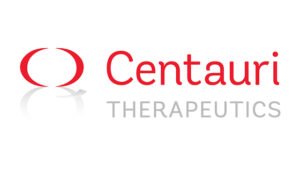

Dr. David Chapman is the Head of Biology at Centauri Therapeutics, bringing over 20 years of experience in vaccine development for both human and animal health. He is a recognized expert in the field of infectious disease, with a strong background in virology, vaccinology and bacteriology. Prior to joining Centauri, Dr. Chapman was the Head of the LAIV Strain Development Group at AstraZeneca, where he was responsible for generating candidate vaccine strains for their childhood influenza vaccine. His career, spanning academia and commercial settings, is focused on pioneering innovative strategies for preventing and treating infectious diseases.


Victoria Savage is Chief Scientific Officer of INFEX Therapeutics Ltd, a biotechnology company that develops novel therapeutics for infections with significant unmet medical need. She has expertise in the development of antimicrobial therapeutics, from early-stage development of hit molecules through to clinical-stage projects. Victoria also holds several advisory roles in the biological sciences field, including the UK’s Biotechnology and Biological Sciences Research Council (BBSRC) Pool of Experts and the UK’s Cystic Fibrosis AMR Syndicate Steering Committee.


Lisa Osbelt-Block studied Biology and Biomedical Sciences and holds a PhD in Infection Biology from Otto von Guericke University Magdeburg. She currently conducts research at the Helmholtz Centre for Infection Research (HZI) in Braunschweig, Germany, in the Department of Microbial Immune Regulation led by Prof. Strowig. Her work centers on the complex interplay between the gut microbiome and the host in health and disease. In recent years, she has focused on developing next-generation probiotics composed of defined consortia of commensal bacteria designed to eradicate antibiotic-resistant pathogens from the gut and support a balanced microbiome. Her vision is to pioneer first-in-class therapeutics by harnessing the power of living bacteria through fundamental ecological principles.
Inicure AB, founded in 2024, develops novel small-molecule FPR1 agonists that boost the innate immune system to combat antibiotic-resistant infections. Their lead compounds, which have shown potent antibacterial and anti-inflammatory effects in preclinical models, target chronic infections such as UTIs and infected wounds. Inicure is supported by GU Ventures, SciLifeLab, and the INCATE network, and is currently seeking partners and investors to advance toward clinical development.


Peter Olofsson-Sahl is the founder and CEO of Inicure AB. He holds a PhD from Lund University and an MBA from Göteborg University, and is Associate Professor of Medicine at University West. With a background spanning academia and biotech, he previously co-founded the preclinical CRO Redoxis AB. His expertise includes research strategy, public funding, and early-stage drug development.
Phage therapy has emerged as a promising alternative to existing antimicrobial strategies. However, a wide array of antiphage defense systems protects bacteria against phages, reducing the potential of this treatment option. Better knowledge of the mechanisms of phage-bacteria interactions is essential for the development of new phage-based therapies. RNAs have emerged as key components of antiphage defense systems including CRISPR RNAs within CRISPR-Cas and antitoxin RNAs within type I and type III Toxin-Antitoxin or abortive infection (Abi) systems. Clostridioides difficile (CD) is an important human enteropathogen and the major cause of nosocomial infections associated with antibiotic therapy. The treatment failure rate is high with the current therapeutic arsenal that should be urgently reinforced with new strategies specifically targeting CD. We characterized the RNA-based antiphage defense systems in CD that are frequently associated with prophages providing efficient defense against other invading phages or contributing to these regions stability. We recently identified a new Abi-like system within a prophage of an hypervirulent CD strain at the origin of the RNA-targeting CRISPR-Cas13 systems. This work is shedding new light on the coordination of bacterial defense strategies pertinent for the development of phage and genome editing, epidemiological monitoring and new therapeutic strategies.


Olga Soutourina is a Professor in Microbiology at the Paris-Saclay University, Co-supervisor of Fundamental Microbiology M2 in Life Sciences and Health Master Program, HDR diploma Advisor in Genetics, Genomics and Microbiology, a group leader and deputy director of the Microbiology department in the Institute for Integrative Biology of the Cell (I2BC), France. After a Ph.D. at Pasteur Institute in Paris and a postdoctoral experience in Ecole Polytechnique and in CNRS, she has obtained an Assistant Professor position in Paris Diderot University and worked at Pasteur Institute in Paris. She initiated new projects on the RNA-based control in Clostridia and established a group in I2BC. She has received a prestigious award from French University Institute IUF. The laboratory is internationally recognized for its expertise in studying the molecular mechanisms by which pathogenic bacteria interact with their host and phages focusing on RNA-based mechanisms in a major human enteropathogen, Clostridioides difficile.
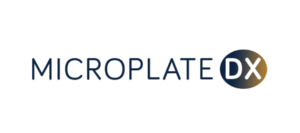

Dr Stuart Hannah is a health technology entrepreneur on a mission to transform the lives of patients globally by developing rapid diagnostic tests to tackle antimicrobial resistance. He co-founded Microplate Dx with the vision to become the leading provider of platform diagnostics to tackle the major global healthcare challenge of antimicrobial resistance in a rapid, scalable and inclusive manner. Dr Hannah has a PhD in Electronic & Electrical Engineering from the University of Strathclyde in Glasgow, Scotland, and has 10+ years’ academic and industrial experience in developing biosensors and diagnostics for healthcare. Since forming the company in 2021 and being awarded a prestigious Royal Society of Edinburgh Enterprise Fellowship, Stuart has already raised substantial equity investment and grant funding for Microplate Dx and won several significant awards for his work.


Khaled founded Zynnon in 2019 to develop a new generation of affordable medical devices to serve large numbers of people.
Prior to Zynnon, Khaled successfully started and grew his former company (Pulssar Technologies) in the liquid handling area. The company was acquired by Tecan (publicly listed company) in 2017 and Khaled joined the group as Vice President Global Sales in the Partnering Business division.
Before creating Pulssar, Khaled held several positions in engineering, project management and business development at Stago, a key player in the in vitro diagnostic market.
Khaled graduated as an engineer specialising in microtechnology from the French national school of mechanical engineering and microtechnology (ENSMM) and holds multiple patents in the area of laboratory equipment and medical devices. He speaks 5 languages.
Khaled is a two-time winner of the Bpifrance Excellence award and the Deloitte Technology Fast 50 & 500 awards.”










Dr Christiane Riedel is a trained veterinarian and a full professor at the Ecole normale superieure de Lyon (ENSL) since 2022. She heads the StruVir team at the Centre Internationale de Recherche en Infectiologie, which focuses on the viral architecture and virus host interaction of important animal pathogens, such as arteri- and pestiviruses. During her stays in Austria, Germany, and Great Britain, she worked in the areas of molecular virology, structural biology, porcine health, and virus diagnostics. Dr Riedel is also the scientific in charge of the set-up and operation of a BSL2 cryo electron microscopy facility at the ENSL.
The global rise of multidrug-resistant (MDR) bacterial pathogens poses a major public health challenge and underscores the need for innovative preclinical models to accelerate antimicrobial discovery. Conventional in vitro assays, based on immortalized cell lines or broth cultures, fail to reproduce the complexity of the human respiratory tract, while animal models are costly, time-consuming, and raise ethical concerns. To address these limitations, we developed a physiologically relevant infection model combining human primary airway epithelia cultured at the air–liquid interface (ALI) with bioluminescent MDR bacterial strains.
ALI cultures, generated from basal cells isolated from human lobectomy healthy margins, differentiate into a pseudostratified epithelium that reproduces mucociliary function, epithelial polarity, and tight-junction integrity. The epithelial architecture, differentiation and cell type proportions were characterized by confocal microscopy, histology, and flow cytometry. We applied this system to bacterial pathogens of high clinical relevance. Specifically, we focused on Acinetobacter baumannii (ABA) and Klebsiella pneumoniae (KP), two WHO priority pathogens frequently associated with nosocomial pneumonia and poor therapeutic outcomes. Recently isolated MDR clinical strains were genetically engineered to stably express the lux operon, enabling real-time, non-destructive monitoring of bacterial proliferation through bioluminescence.
Upon apical infection of fully differentiated ALI epithelia with varying bacterial loads (ABA and KP), we observed progressive tissue colonization by bioluminescence and CFU counting (apical compartment) followed by epithelial barrier disruption beginning at 18–21 hours post-infection. This was reflected by a decline in transepithelial electrical resistance (TEER) measurement correlated to the detection of viable colony-forming units (CFU) in the basolateral compartment, confirming bacterial translocation. Longitudinal bioluminescence closely paralleled CFU counts, demonstrating that bioluminescence provides a reliable, non-destructive readout of bacterial growth, reducing reliance on CFU enumeration.
To demonstrate the ability of the model for drug screening, we tested the efficacy of tigecycline against ABA at four concentrations (0.5, 1, 4, and 16× MIC). Antibiotic treatment was applied in the basal compartment, mimicking systemic administration, 15 hours after infection to allow tissue colonization. We observed bacterial stabilization at 0.5 and 1× MIC, while higher doses (4 and 16× MIC) induced a significant decrease in bioluminescence and CFU in both compartments (apical and basal sides), demonstrating the efficacy of the antibiotic treatment. This proof-of-concept confirms the ability of the model to support quantitative drug evaluation.
Beyond bacterial load, the ALI platform supports multiparametric readouts, including barrier integrity, cytokine release, host stress and apoptosis markers, and transcriptomic or proteomic profiling. These complementary analyses provide a holistic view of pathogen behavior and host response, enhancing the translational relevance of the model.
In conclusion, the ALI–bioluminescence infection model offers a robust, dynamic, and predictive in vitro tool for studying respiratory bacterial infections and evaluating antimicrobial candidates. By bridging the gap between classic in vitro assays and animal models, and integrating host-pathogen readouts, this approach has the potential to accelerate discovery of effective therapies against respiratory pathogens.
Acknowledgment: We thank C. Kemmer and V. Trebosc (BioVersys) for their contribution to developing the bioluminescent bacterial strains used in this work.


Dr. Marc Vandame obtained his PhD in imaging from Polytech Orléans, where he studied bioluminescence and its applications in oncology and bacterial diseases. He later completed a program at Stanford University in project and program management to strengthen his leadership and organizational skills. For the past ten years, he has been Director of R&D Programs at ERBC Dommartin, focusing on the development of in vitro models to investigate viral and bacterial infections. He also supervises the in vitro analysis laboratory, with activities including qPCR, flow cytometry, and advanced cell culture systems.